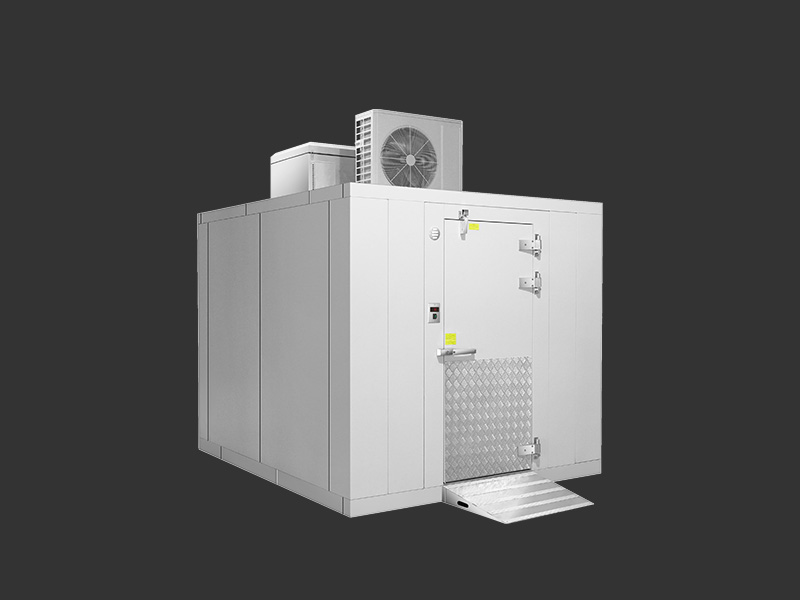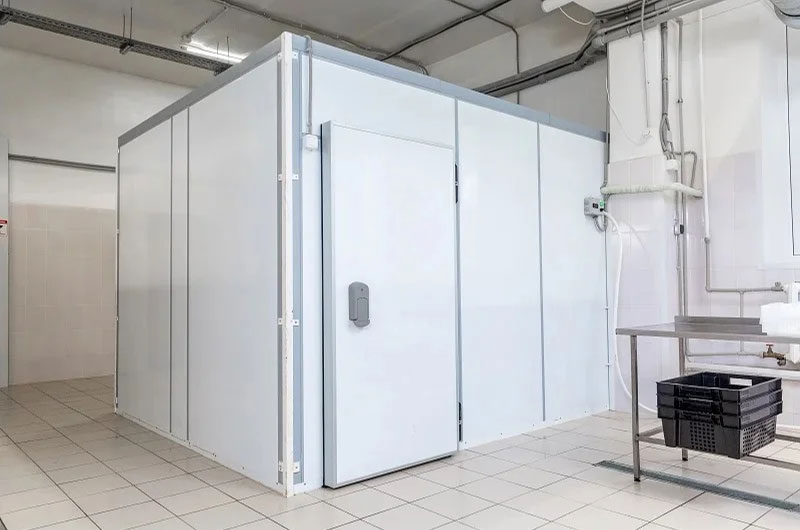In today’s rapidly evolving commercial and residential settings, maximizing space efficiency has become more crucial than ever. Whether you run a small restaurant, a boutique grocery store, a flower shop, or even a home-based food business, having reliable cold storage is crucial. However, many small businesses or homes struggle to find suitable cold room solutions because of limited space. This is where customizing cold rooms for small spaces becomes a practical and effective option.
Custom cold rooms are refrigeration solutions specifically engineered to match the unique size and functional needs of any given space. They maximize the available area, optimize energy use, and ensure that perishable goods are stored safely and conveniently.
Why Customize Cold Rooms for Small Spaces?
Space Efficiency
Off-the-shelf cold rooms often come in standard sizes, which may not suit the compact and irregular layouts common in small shops or homes. A custom cold room can be designed to fit within limited space without compromising storage capacity.
Optimized Performance
A properly designed custom cold room incorporates efficient insulation, airflow management, and temperature controls tailored to the stored products and space constraints. This leads to better preservation, reduced energy consumption, and longer equipment life.
Versatility
Custom cold rooms can be adapted to various applications: food storage, pharmaceuticals, flowers, beverages, or laboratory supplies. Their configurations can include specialized shelving, humidity control, or multi-zone cooling for different products.
Compliance and Safety
Small businesses must meet local health and safety standards. Custom cold rooms allow you to incorporate features such as easy-to-clean surfaces, secure doors, and alarms, ensuring compliance while maximizing space.
Key Considerations When Designing Cold Rooms for Small Spaces
1. Accurate Space Measurement and Layout Planning
Before designing a cold room, precisely measure the available area including ceiling height, door placement, and access points. Use these measurements to draft a layout that optimizes every inch. Vertical storage options and modular shelving can help increase usable capacity.
2. Insulation and Wall Materials
Efficient insulation is vital for energy savings and maintaining consistent temperatures. In small spaces, insulation panels must be thick enough to prevent heat ingress but thin enough not to consume too much floor area. High-performance polyurethane or polystyrene panels are commonly used.
3. Door Design and Placement
The door is a key factor affecting the cold room’s usability and efficiency. Sliding or bi-fold doors are ideal for saving space compared to standard hinged doors. It’s also important to choose doors with excellent sealing and insulation to reduce temperature loss.
4. Cooling System Selection
Compact and efficient refrigeration units such as remote condensing units or self-contained systems can be integrated into tight spaces. Custom cold rooms can also feature split cooling systems where the compressor is placed outside the small room to save interior space and reduce noise.
5. Airflow and Temperature Management
In small cold rooms, airflow must be carefully controlled to avoid cold spots or temperature fluctuations. Installing fans and vents strategically can ensure even cooling throughout the room. Digital thermostats and sensors can monitor temperature and humidity in real time.
6. Lighting and Electrical Considerations
LED lighting that generates minimal heat is preferable to avoid interfering with cooling efficiency. Electrical wiring should be planned to meet safety codes and allow easy maintenance without wasting space.
7. Shelving and Storage Solutions
Modular, adjustable shelving systems maximize storage and adapt to changing needs. Using vertical space with tall shelves or mezzanine platforms can substantially increase capacity. Materials used should be rust-resistant and easy to clean.
Popular Customization Features for Small Cold Rooms

Compact Footprint with High Storage Capacity
Designers can create cold rooms that fit into narrow corners, under staircases, or in unused alcoves by customizing panel shapes and sizes. This allows small businesses to have cold storage without major renovation.
Multi-Temperature Zones
Some products require different temperatures or humidity levels. Small cold rooms can be divided into zones with separate controls, ideal for businesses storing diverse items like dairy, vegetables, and frozen goods.
Portable and Modular Cold Rooms
Modular cold rooms made of prefabricated panels allow quick assembly and disassembly. These can be relocated or expanded as business needs grow, making them ideal for small, evolving spaces.
Smart Monitoring and Controls
Incorporating IoT sensors and remote monitoring systems helps small business owners track temperature, humidity, and system performance from anywhere. This reduces spoilage risk and maintenance costs.
Benefits of Custom Cold Rooms for Small Spaces
- Cost Savings: By tailoring the cold room exactly to your needs and space, you avoid paying for excess capacity and reduce energy consumption.
- Improved Product Quality: Customized temperature and humidity controls enhance the shelf life and freshness of stored goods.
- Better Space Utilization: Small businesses and homes can have functional cold storage without sacrificing valuable floor space.
- Enhanced Operational Efficiency: Optimized layouts and door placements speed up loading/unloading and inventory management.
- Compliance: Tailored designs can meet local food safety, health, and building regulations.
- Scalability: Modular and flexible systems can evolve with your business, adding panels or shelves as needed.
Practical Tips for Customizing Cold Rooms in Small Spaces
- Consult Experts Early: Work with a cold room manufacturer or refrigeration specialist to analyze your space and needs. Early expert advice ensures feasible, efficient design.
- Prioritize Essential Features: Focus on must-have features for your business to avoid overcomplicating the design or inflating costs.
- Plan for Maintenance Access: Even in tight spaces, allow enough room for technicians to service refrigeration units and electrical components.
- Use Space-Saving Doors and Shelves: Sliding or folding doors and adjustable shelving optimize usable area.
- Consider Energy Efficiency: Invest in high-quality insulation and efficient cooling units to save energy costs long term.
- Account for Future Growth: If you expect your storage needs to grow, design for modular expansion.
Case Example: Boutique Bakery Cold Room
A boutique bakery in a small urban location needed a cold room to store dough and perishable ingredients. The space was a narrow 6×6 feet area behind the kitchen with a low ceiling.
- The cold room was custom built with insulated panels cut to fit the exact space.
- A sliding insulated door allowed quick access without blocking aisles.
- Vertical shelving was installed on three walls to maximize storage.
- A compact split refrigeration unit was installed outside to save interior space.
- Digital temperature and humidity sensors ensured perfect conditions for dough fermentation.
- LED strip lighting illuminated the shelves without heating the room.
This custom cold room allowed the bakery to maintain ingredient quality and increase production without costly space expansion.

